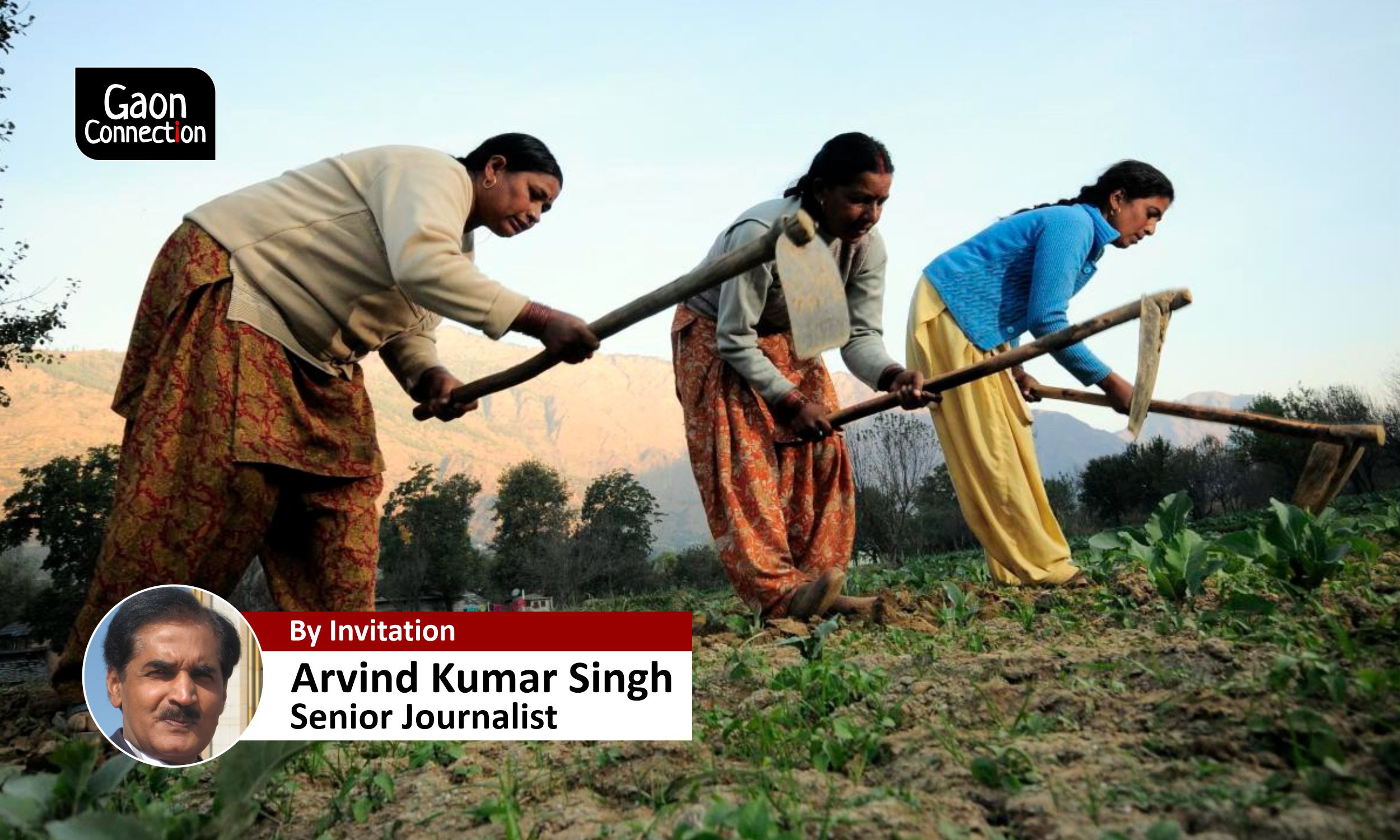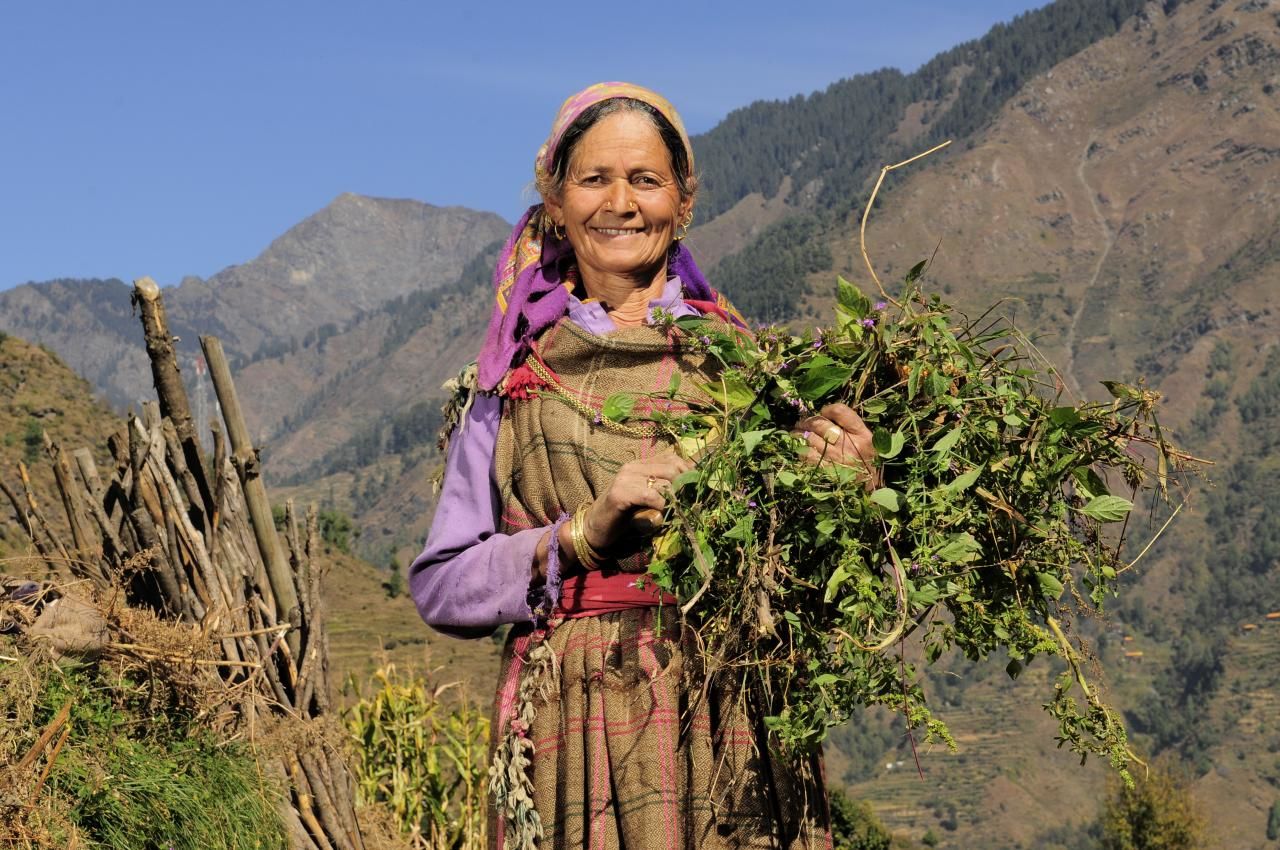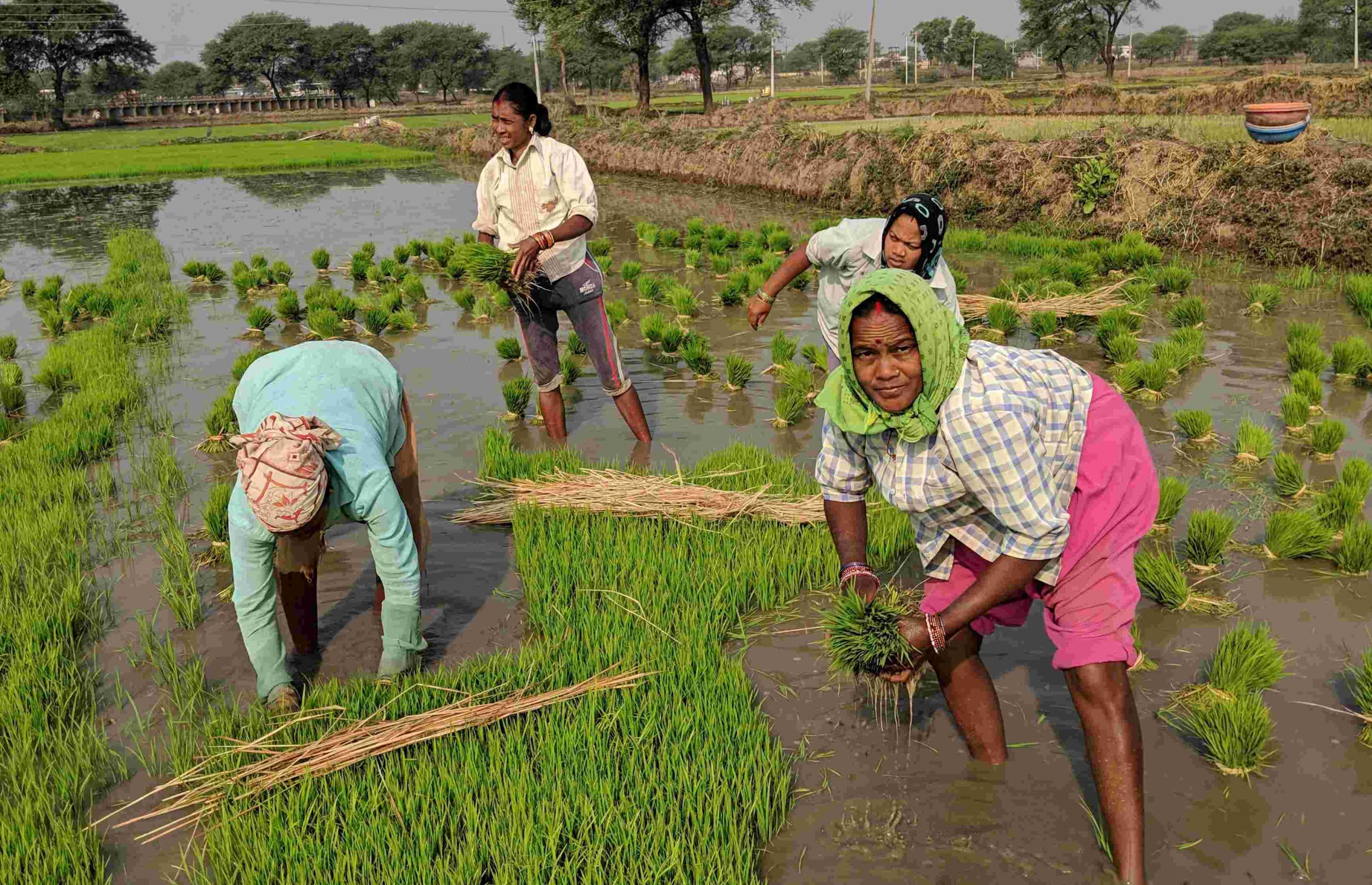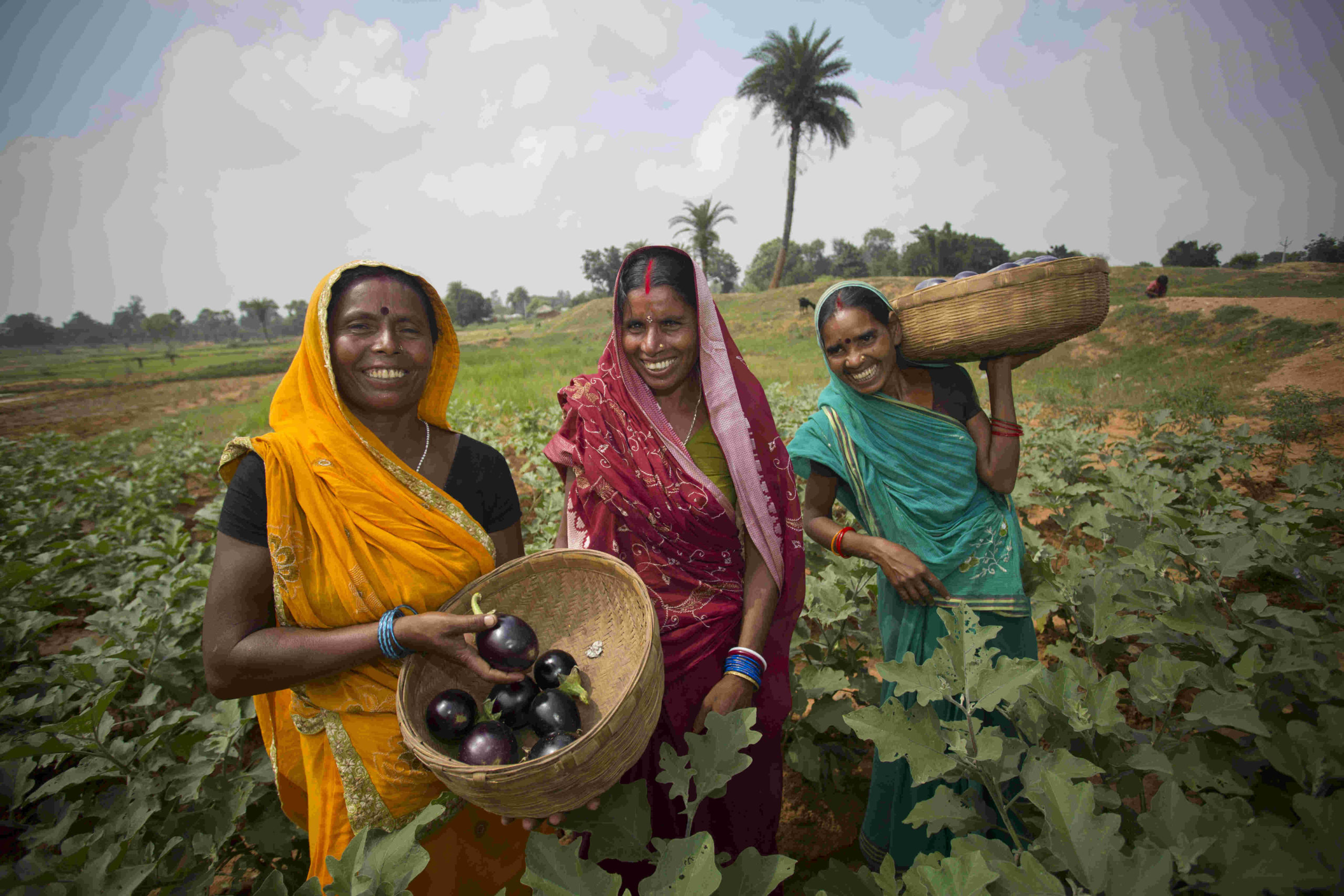Where do women farmers see themselves in the 21st century?
Indian women are overcoming barriers to chart out glorious journeys to success. They are also the major driving force behind agriculture. However, in any discourse of women, rural women, especially agricultural labourers — the group that is the most significant contributor to the country’s progress — is left out.

Despite being the backbone of farming, women farmers are marginalised and devoid of rights.
A few years ago, visiting the Chaudhary Shravan Kumar Himachal Agricultural University in Himachal Pradesh, one was surprised to find a large number of male students in the home science department. Although it is normal to see the student body ratio tilting more towards male students in agricultural universities, the home science department is traditionally looked upon as a ‘women’s department’.
Though the first agricultural university in the country was founded as early as 1962, agriculture was not a keen subject of interest for female students, with their participation at a mere five per cent. The women students of Himachal Pradesh, on the other hand, have broken the bastion of male supremacy in the field of agricultural education. After 1995-96, female students moved towards agricultural education and their enrolment reached 14 per cent. By 2004-05, it was 43 per cent, and in 2010, it stood at 54 per cent.
This is data for a university, but right from Himachal Pradesh in the north to Kerala in the south, women are the backbone of farming. Their participation in agricultural education may be low, but it is an undeniable fact that women are capable farmers.
Women’s role in the ongoing farmers’ agitation is also quite pivotal. The protesters have used the platform to recognise and honour women farmers. On the 55th day of the agitation, they were handed over the reins of the protest, and on International Women’s Day, more than 100 days after they sat on protest, farmers’ organisations paused, yet again, to honour women’s labour and contribution.

The things women farmers do
What do women not do in farming? Sowing, planting, irrigating, weeding, harvesting, transporting, sorting, filling and packing, besides chores related to animal husbandry such as fodder collection, grazing, milking, cleaning, gathering dung and making dung cakes, and processing milk. They also operate tractors and other motors. Despite all this, are they really included in the mainstream of agriculture? Does the government really consider them farmers?
As per the 2011 census, the number of women farmers was 36 million and the number of women agricultural labourers 12.5 million. This has gone up considerably since then. But, the percentage of women farmers in terms of cultivable land owned is only 13.87 per cent.
How much help they get from government schemes can be gauged from the fact that only 16,857 women farmers benefit under the PM Kisan Yojana. The Economic Survey 2017-18 revealed that with the growing migration from villages to cities, the dominion of women in the agriculture sector has increased too.
However, they continue to suffer discrimination in terms of access to agricultural resources such as land, agricultural credit, water, seeds and market. Due to the shortcomings in policy making, they are deprived of the benefits of various government schemes.

From Krishi Vigyan Kendras to all other institutions, the presence of women scientists and staff has been very sparse. Women are generally small and marginal farmers who have less than half-a-hectare of land. Most do not have ownership rights to the land, and are deprived of all facilities extended to their male counterparts.
The standing committee on agriculture, while recommending to bring women in the mainstream agriculture sector, had admitted in Parliament that the unique role of women farmers in agricultural production cannot be overlooked. During the UPA government, the National Agricultural Policy was planned in 2007 to bring women farmers to the mainstream, and several schemes were formulated to benefit 30 per cent of women farmers.
Men may have better access to vital instruments and tools, but the fact is that women are themselves resourceful. Their participation exceeds 80 per cent in the post-harvest process as well as seed preparation. Their participation in all agricultural activities exceeds that of men as a whole.
While, post the Green Revolution, men have accessed large-scale technology and tractors, tillers and spares, women continue to work with their hands. Agriculture is 65 per cent human labour. Constantly working in one position leads to muscular fatigue and exhaustion. This makes women vulnerable to many diseases.
While various techniques and tools have been developed for simplifying work and reducing fatigue, women farmers have little access to them. Farming women think for their family, and can ill afford to do so for themselves. Physical hardships have a great impact on their health as well as efficiency.

Equipment for women
With detailed research, equipment that is affordable and can even be made by the local lohar (blacksmith) has been developed for women farmers. For the women farmers of the hills, devices such as fodder collectors, tea leaf picking equipment, umbrellas, fanning instruments and cutters, have been developed, but they need to be made accessible to the common women farmers. Companies are not particularly keen on developing agricultural equipment to address the needs of small and women farmers, because it doesn’t seem as profitable to them.
In the Economic Survey 2017-18, it was openly acknowledged that the share of women in the field of agriculture is increasing due to the exodus of men from the village to the city. Women were observed assuming varied roles in agriculture. The need is to improve land, water, credit and technology access to women. At the same time, rural women need to be given agricultural training.
Women’s participation in the animal husbandry sector is 71 per cent, while the dairy sector engages 75 million women as compared to 15 million men. Women provide fodder, milk and graze the animals and use them for transportation. Ploughing is primarily done by men.
Women are the backbone of the dairy cooperative movement. Women who were once denied the right to be called farmers despite doing farming, are today working as consultants in the field of rural cultivation. The Narendra Modi-led Central government has given great importance to agricultural development and has brought a number of schemes for rural women but no significant stride has been made towards improving the conditions of women farmers.
Women farmers do not get facilities for cultivation nor loans. Even though farming hinges on their efforts, agricultural policies do not consider them farmers. However, with the first-ever celebration of Women’s Farmers Day on October 15, 2017, India sent out a clear message to the world that it acknowledges the contribution of its women farmers.

But, looking at the ground reality, all such measures do little beyond being symbolic, because despite being the backbone of farming, women farmers are marginalised and devoid of rights. The policies of most states conveniently overlook them and state governments also do not take concrete initiatives to empower them.
Although the share of women is consistently rising among agricultural labourers, their state is lamentable. In 1991, a new scheme was launched to train women in the agriculture sector during the ministerial period of Balram Jakhar, and Krishi Vigyan Kendras were further strengthened. Training was provided in the khadi sector too, in areas ranging from processing of cereals and pulses to papad and spices’ making, and collection of non-edible oilseeds. But there is still a lot to be done. Very few women are able to receive technical knowledge.
The Mahatma Gandhi National Employment Guarantee Act (MGNREGA) has slightly improved the condition of rural woman labourers in areas where it has been properly implemented. But the participation of women at the planning level is not high, because they are not very educated and aware. In most places, the facilities to be provided under MGNREGA such as clean water, a shishu sadan for children and resting places exist only on paper.
Most women in rural India are still dependent on agriculture for livelihood, and the quality of employment is undetermined. Even where there is a discussion on women and agriculture, rural women agricultural labourers, who are the most significant contributor to the country’s progress, are left out.
Even today, agriculture remains the mainstay of our economy. The corona crisis has further underscored the importance of farming. Agriculture is the largest source of employment in the country, providing livelihood to 57 per cent of the people.
Be it in the role of farmers or co-farmers, domestic help, daily wage labourers or managers, women have a ubiquitous presence in farming. With the development of horticulture, animal husbandry and fisheries, the role of women has further been enhanced.
The men have headed to the cities by dropping the burden of unprofitable farming upon women, who shoulder their charge with aplomb. But, are they celebrated for what they do? Not quite.
The author is a senior journalist and a rural affairs expert. Views are personal.
Read the story in Hindi here.

